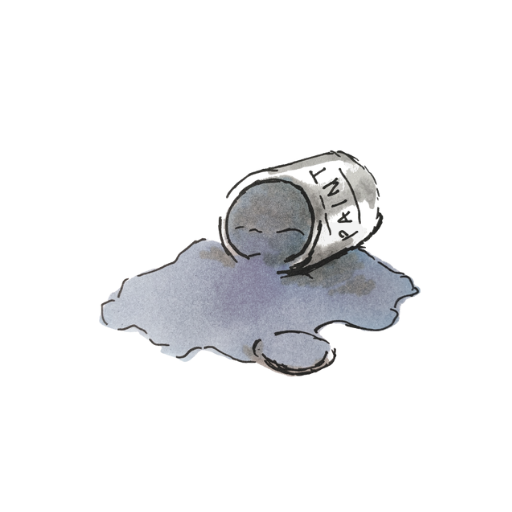
If you follow us already on Instagram then you’ll probably know that I’ve become a bit obsessed with a paint stripper called Peelaway 1. This blog goes through everything I have learned about how to restore Victorian plasterwork with Peelaway. It’s time to reveal the beautiful plasterwork hidden away under layers of paint.

I love Peelaway for a few reasons:
- It applies as a paste not a liquid, making it infinitely easier to work with. I tried liquid strippers before and they just made a huge gunky mess everywhere.
- It neutralises lead paint. This is great when working in a old house with layer upon layer of paint. I’m no professional, so I can’t speak to how effectively it neutralises, but it’s certainly a claim the brand makes.
- It works a dream! Left on for the right about of time, the paste will penetrate through layers of paint. Once ready, you literally peel it off revealing the original feature beneath.
- I have mainly been working on our Victorian plasterwork, but it is also safe to use on cast iron fireplaces (a heat gun could lead to cracking), woodwork and externally.
About our house
We are lucky enough to have a 1901 Victorian/Edwardian terrace (it was built as reigns changed so actually has a mix of features from both styles) and we have a number of original features including ceiling roses, coving, corbels and cornices as well as floorboards and fireplaces.
When we viewed the house, it was clear it needed a lot of work, but from the very beginning, my favourite feature in the house were the corbels in the hallway (I think these have been styled on a young Queen Victoria; I like to think so anyway) and the ceiling roses we have in the dining and living rooms.
BUT, for reasons known only to the fashions of the 1970s, the ceilings, coving, ceiling roses, corbels and all, had been painted in shocking textured paint! On advice from the surveyor we did have the textured paint checked for asbestos, but thankfully none was present and so it was safe to remove.
Restoring Victorian plasterwork with Peelaway
Here’s some beautiful (!) before pictures:
It was actually the Instagram community which directed me to Peelaway in the first place, so after some investigating and viewing a lot of YouTube videos, I decided this seemed to be exactly what we had been hoping for and that the dream of restoring this beautiful plasterwork might not be so unrealistic after all!
I ordered tester pots of both Peelaway 1 and Peelaway 7. I would wholeheartedly recommend that before deciding to go ahead you do the same. It really is worth taking the time to do it right. In my experience Peelaway 1 has always won (it is best for old paint and ours went waaaaay back), but I know other instagrammers who have found Peelaway 7 worked better for them, so it’s definitely worth trying both.
TIP: It is really important to work out how long it is going to take for the Peelaway to work. Apply a small patch (about 10cm square) somewhere discreet and check progress regularly. In my experience it will need at least 24 hours with 30-35 hours being ideal. Keep this in mind when you apply! Think ahead to when you need to take it off – make sure that’s not a time when you will be a) out b) asleep or c) hungover. Thank me later.
How to restore Victorian plasterwork with Peelaway:
1. Test, test, test
Seriously, I can’t stress this enough. Test your times. I would suggest applying a small patch to an inconspicuous area first and test after 24 hours and then every hour after that until the paint peels away easily. You shouldn’t need to chip at it.
Talking timings, plan ahead. Do not apply it before a bit night out because you will have no choice but to remove it on a hangover – you must not let it dry out. You also don’t want to be getting up at 3am to peel it off, so think ahead. For me, 33 hours was perfect, but it’ll vary for everyone so do not rely on my timings.
2. Apply carefully
I am mega impatient and a bit of a corner cutter if I can get away with it. This is not a situation in which you can get away with cutting any corners I’m afraid. Some tips for applying:
- Wear disposable gloves and use your hands. You will get a special spatula with the tub of Peelaway itself, but it is soooo much easier to apply with your hands. But do not get the stuff on your skin or in your eyes (or on your clothes, or on the cat for that matter) because it is caustic and it will burn you. So be careful. Get it into all the nooks and crannies.
- Try to keep the thickness about even. A couple of millimetres thick should do the trick. Too thin and it’ll dry out; too thick and it’ll be a bit sloppy to remove. You’ll find this is a bit of trial and error to get right.
- Once applied, add the special ‘blanket’ in manageable pieces. 3D pieces like the corbels are more difficult to work with, so you’ll find cutting the blanket down much easier to manage.
- Seal the edges with masking tape to help avoid the peel away drying out.
- Check progress regularly, basing removal time on your test patch.

3. Wait…..
It is sooooo tempting to remove before it’s completely ready because you will just want to crack on. I’ve done this myself and it just makes the job take longer in the end because the paint won’t have been completely softened and so won’t come away as easily as if you just wait a bit longer. Patience is a virtue and all that.
4. Peelaway!
Without doubt, the most satisfying bit (click for a close up).
And if these pics haven’t convinced you, how about this:
Now, as you can see there are a few bits that didn’t come away first time and that is because the thickness of the paint is variable. Here, for example, poor old Vic has a thick chunk of paint wedged into her nostril! I tried a variety or things to work on these bits. Cocktail sticks break too easily and a blade will damage the plaster if your hand slips. I found the best thing to use was an orange stick you can buy from the pharmacy to push your cuticles back. If the paint doesn’t come away easily, apply a little more peel away just to the leftover bits.
It will take a while getting the intricate detail back and that does just involve graft and patience (and orange sticks).

I used an old, blunt butter knife to help remove the paint in strips. Anything flat and blunt will be helpful here, but be really, really careful not to damage the plaster. If it doesn’t come away easily, it isn’t ready.
I should note that it was also far easier to remove the paint from the coving as it just came off in great long strips, whereas the corbels and ceiling rose has a lot of detail that took serious time and effort to bring back to life.

5. Buff that beauty up
Once the paint is removed, there will be some yellowing and this should be removed for a smooth finish.
I used steel wool to tidy the plaster up and remove yellowing. I bought both grade 1 and grade 0 from Wood Finishes Direct. I preferred grade 0 for nearly everything, especially the intricate ceiling rose and corbels, but found grade 1 easier for the coving which was plain with no intricate detail to worry about.


5. Neutralise
We used the neutraliser spray that came with the peelaway in an old spritzer bottle (one that used to have antibacterial spray in). Just spritz all over and leave to dry.
6. Seal
Is it just me, or does everyone else sing ‘babyyyyy I compare you to a kiss from a rose on the grey’ everytime they read the word seal? Just me? Ok then.
We used plaster sealant by Dulux which worked fine on the coving (we haven’t yet got to this stage with the corbels or ceiling rose). I have seen that Zinsser 123 is highly recommended, but we couldn’t get hold of this. We have had no issues with the Dulux version.

7. Paint
Finally, paint! We have painted our coving with ordinary emulsion. We haven’t actually painted the ceiling rose. We have left it bare plaster for fear of losing the detail again, but if we do paint it in the future, I’ll put up pictures.

Enjoyed this blog? Pin for later:







